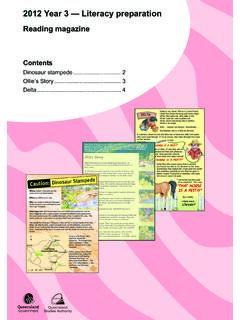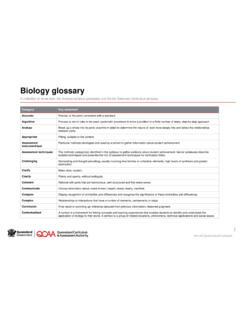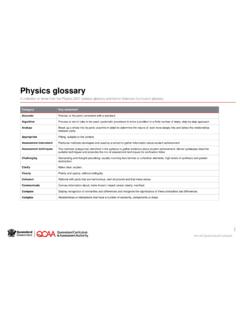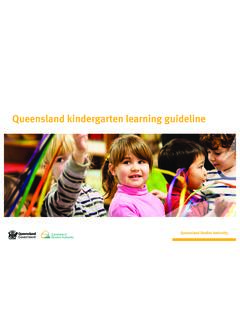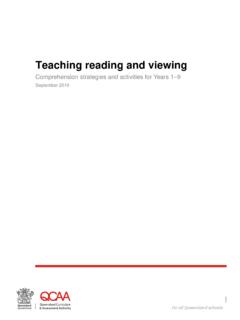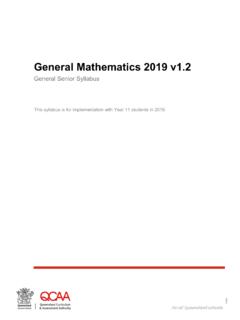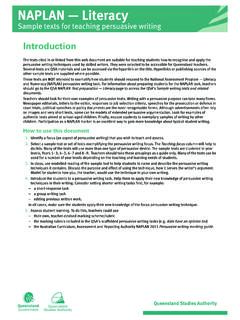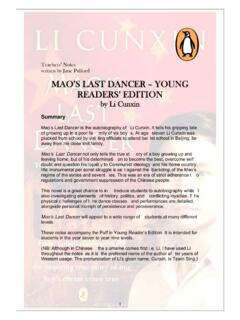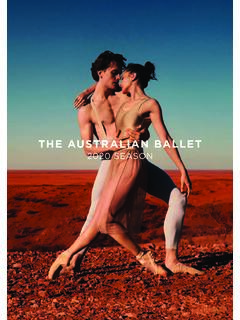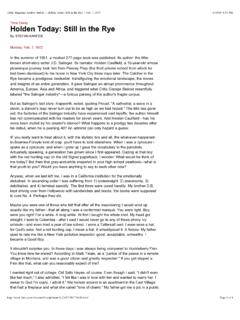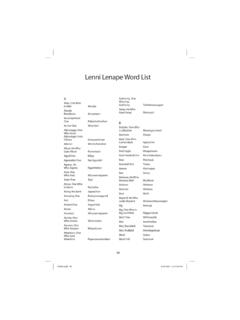Transcription of Myths, Misconceptions, Problems and Issues in Arts Education
1 Myths, Misconceptions, Problems and Issues in Arts Education By Janis Boyd Griffith University Brisbane Australia First, we need the arts to express feelings words cannot convey. Second, we need the arts to stir creativity and enrich a student's way of knowing. Third, we need the arts to integrate the fragments of academic life. Fourth, we need the arts to empower the disabled and give hope to the disenchanted. Above all, we need the arts to create community and to build connections across the generations. Dr Ernest Boyer, President of the Carnegie Foundation for the Advancement of Teaching. 1994. In Goals 2000: Opportunities for the Arts. Preamble For years more than any other endeavour or enterprise the arts in Education have suffered from an over abundance of myths, misconceptions and Problems in schools.
2 Why is this so when the arts are as natural as living and breathing? From the time that they are born children are introduced to the arts as the very foundation of their culture. The nursery is alive with aural sounds and pictorial visual imagery. Colourful mobiles are sometimes the first objects of scrutiny from tiny eyes, while the tinkle of a lullaby by Brahms emanates from a small music-box. Parents sing with children, and sing them to sleep . During the early days of infancy parents read and act out traditional folk stories with laughter and in various tones of voice. Children respond by mimicking and playing. These sensory responses to the human experience are encouraged and rewarded by parents. Parents hang the child's very first drawings and paintings on the refrigerator in the kitchen.
3 The very first song that a small child sings is lauded and applauded. Tiny-tots are encouraged to dance and perform- stage mothers abound as tiny, pink ballet slippers are packed with costumes and make up. The above are examples of 'the-arts-in-action' enacting body, spirit, intellect and emotion while the child comes to know and understand their world. The arts as purveyors of culture are valued and introduced to young children by parents and grandparents. Young children's first attempts to communicate ideas and feelings are through one or more of the arts forms. A simple gesture is captured in dance, a mood is expressed through music, an idea is painted on paper and a response is mimed. It is impossible to imagine a child's life and being without the arts.
4 Yet, as a child grows older and enrols in school, the arts, which are the very heart of our culture are undervalued. They become less important and less understood in educational contexts. The spontaneity of 'home-taught arts' which is meaningful and imaginative is lost. The rich tapestry of the arts as ways of knowing and feeling, and sources of delight and enjoyment are sacrificed for arts activities that are soul destroying and meaningless. Children are not taught the basic knowledge and skills in the arts and therefore their Education lacks depth and dimension. Why is this happening? There are many myths and misconceptions about the arts in schools as well as many Problems with pedagogy. This paper sets out to identify some of the myths and misconceptions in arts Education whilst identifying the conflicting pedagogical paradigms which impinge on arts teaching today.
5 The Dichotomy between Community Values and the Arts: The Report by the Senate Environment Recreation Communications and the Arts References Committee: Arts Education ( October 1995. ) suggests that the community is at odds with itself over its valuing of "an imaginative and creative life" which is fundamental to, and defines us as human beings. Society through the agency of schools is denying children the right to quality self-expression through the arts. Most submissions to the inquiry complained, more in sorrow than in anger that the arts in schools is widely regarded as a 'frill'. A society that regards paid work as the 'real thing' and creative life as a frill, something that is carried out on behalf of the community by a special priestly class (the arts community), is an incomplete and unhealthy society.
6 Arts Education is needed to foster a widespread creative life which counterbalances the forces of mass production and mass consumption in a specialised materialistic society. Arts Education is needed as an impetus for change, challenging old perspectives from fresh angles of vision, or offering original interpretations of familiar ideas. Paid work is seen as purposeful by the community, whilst artistic activities are not regarded as having any real purpose. Whilst consumers in society may value a marble sculpture it does not have the same purpose as an electric iron. Art, in this case. can be done without but the electric iron cannot. From the point of view of the community the word 'artist' conjures a vision of a temperamental romantic leading a carefree life- a bohemian unencumbered by the mundane constraints that beset the ordinary wage-earner.
7 This ambivalent community attitude flows through to schools - there is uncertainty of what the arts are and what worthwhile outcomes they can produce: Many tend to avoid or ignore the arts in their teaching or, worse still, confuse art with entertainment, regarding arts activity, like play, as a non-serious past-time and therefore to be accommodated only on the fringe the curriculum (John Deverell, 1995, ). Furthermore, whilst the community does not seem to value artistic and creative processes, per se the school generally, and arts educators in particular, recognises that the arts assist with the development of high level skills such as the student's ability to handle complexity and ambiguity, problem-solving, communication skills, self-discipline and team work.
8 These skills are recognised as essential for success in the new high technology, high-information and inclusive world in which we live. The arts teach the life-skills of team spirit, character building, cultural benefits and the opportunity to express feelings, and mix with other people. They enrich educational experience and foster confident self -expression - the desire to have a go, and develop habits of being self-directed and being involved. Arts Training Australia sees the arts as being economically important: Excellence and innovation are critical to our collective future in generating the industries we require to enhance the nation's economic and social well-being. Creativity and innovation drive not only the cultural industries, but also developments in science, technology, industrial and management practices, all major contributors to our continuing socioeconomic (Submission 20 ).
9 Creative, innovative, divergent, curious, critical thinking should permeate the school curriculum as well as our life in the community. Yet, the community is at sixes and sevens with itself regarding the 'worthiness' of the arts, and generally teachers as agents of the community, do not value the arts despite the fact that the arts contribute to the Education of the individual child through: developing the full variety of human intelligence developing the ability for creative thought and action the Education of feeling and sensibility the exploration of values enhancing understanding of cultural changes and differences developing physical and perceptual skills (Calouste Gulbenkian Foundation, 1982). The arts are seen as cultural products which are indicators of our society being "cultured".
10 Arts which entertain tourists, indicate to the rest of the world that Australia is a "culturally", civilised society which values esoteric aesthetics which are the heart and soul of long established traditional civilisations. In order to do this, Australian society has deferred to overseas artists and performers- the Hollywood actor, the Russian dancer and the European artist. A 'cultural cringe' persists because many Australians themselves believe that our own arts' performers are inferior to those from overseas. Misconceptions such as the belief that an arts Education does not offer sufficient employment opportunities or economic benefits are still common. In general our own arts are undervalued in both the community and school, and the artistic consumers of tomorrow will continue to be ignorant of the arts if creative life is not facilitated and encouraged in school settings and throughout life.
